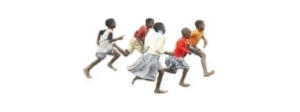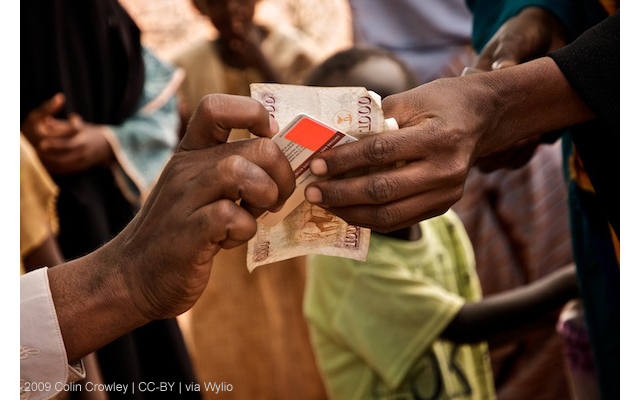Countries in the Global South began introducing cash transfer programs for the poor on a large scale nearly two decades ago and these have proved extremely effective. Robust evidence from across the South has shown that this approach to social protection is working!
At the heart of the rhetoric around a potential failure of directly giving money to poor people is the belief that poverty is linked somehow to laziness and dependence. When a poor person receives a regular cash grant, it may enforce that state of permanent laziness and deter the person from wanting to seek work, some argue.
We cannot stress enough that poverty is an extremely complex phenomenon and poor people living in marginalized areas, such as Bamba, where we work, are excellent economists. Imagine you have an equivalent of $30 a month to ensure that your children are fed, dressed, have a roof above their heads and attend school. This is extremely difficult, yet millions of poor people make it happen. Now, imagine that a person who struggles to secure $30 a month, receives additional $20 as a cash grant. Logically, this person will make best decisions on how to spend this additional money. Some recipients will not, but they will be in a small minority.
This has been proved by hundreds of studies undertaken across the world, looking at small and large cash transfer programs. The studies and evaluations have highlighted issues and concerns (such as that simply receiving a cash transfer does not necessarily empower female recipients), but the mounting evidence is that people spend cash transfers wisely.
So what are the main benefits of these transfers? Hanlon, Barrientos an Hulme, development academics, who have studied this topic closely, argue that locally designed, transparent, regular and significant (at least 20% of household’s income) cash transfers primarily help children to be better off as adults than their parents are. It is the breaking of the inter-generational cycle of poverty that is key here! Cash transfers allow parents/carers to buy more and better food for children and to, crucially, protect children from malnutrition and stunting. Money is spent on children going to school. A better educated and healthier generation is in the making!
The above-mentioned authors stress that cash transfers are not the magic bullet. States must provide health posts, and schools must function. State building remains the key challenge in development. We cannot wait however with social protection until development happens. Cash transfers can be an essential precursor to growth and a driver of development, Hanlon, Barrientos and Hulme argue.
We have seen here in Bamba, how cash transfers help carers of vulnerable children buy better food and keep the children in schools. This thing works!
ODI’s large scale review* of evidence on the impacts cash transfers on households and individuals between 2000 and 2015 produced the following key findings:
The impacts of cash transfers on individual- and household-level outcomes:
• Monetary poverty: Cash transfers reduce monetary poverty.
• Education: Cash transfers raise school attendance, but do not always lead to improved learning.
• Health and nutrition: Cash transfers stimulate health service use and improve dietary diversity, but there is less evidence that they affect the height and weight of children.
• Savings and investment: Cash transfers can help foster beneficiaries’ economic autonomy.
• Employment: Cash transfers are associated with a reduction in child labour. Most show either no effect or a positive effect on adults working.
• Empowerment: Cash transfers increase women’s decision-making power and choices, but do not always reduce emotional abuse.
The role of cash transfer design and implementation features:
• Core design features: There is a strong evidence base showing that the size of the transfer and duration of its receipt play a role in supporting progress towards intended outcomes.
• Conditionality: Including an element of conditionality (in terms of health and education service use) can, but does not necessarily, lead to greater impacts in these areas; clear communication about the importance of using services is an element of conditionality clearly associated with greater service uptake.
• Payment mechanisms: A limited evidence base shows that different payment mechanisms can be linked to different outcomes.
• Complementary interventions and supply-side services: Complementary interventions and supply-side services can strengthen the impacts of cash transfers.
*Understanding the impact of cash transfers: the evidence Jessica Hagen-Zanker, Francesca Bastagli, Luke Harman, Valentina Barca, Georgina Sturge and Tanja Schmidt, ODI, London, 2016

